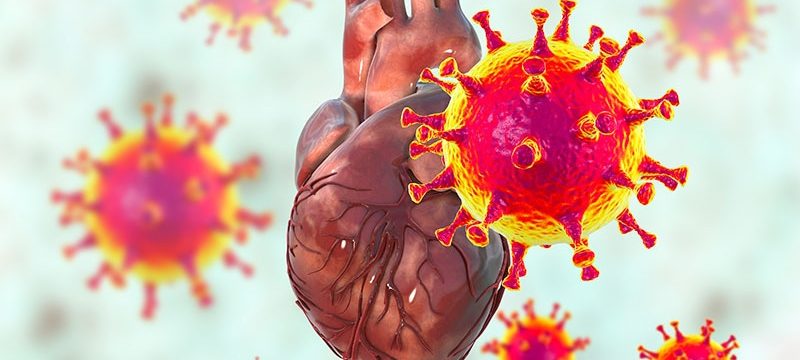The study covered in this summary was published on MedRxiv.org as a preprint and has not yet been peer-reviewed.
Key Takeaways
-
More than 40% of participants with COVID-19 reported cardiac-related postacute sequelae SARS-CoV-2 infection (PASC) symptoms over a mean of 12 months.
-
The prevalence of new cardiovascular (CV) risk factors and cardiac conditions after COVID-19 infection was 27%.
Why This Matters
-
This study demonstrates an association between COVID-19 infection with a worsening prognosis of existing CV risk factors and increased risk for CV complications.
-
There is a need to improve access to care and awareness of cardiac-related PASC symptoms in patients with a history of COVID-19.
Study Design
-
A cross-sectional analysis assessed adults who tested positive for COVID-19 and were in the Johns Hopkins COVID-19 HOPE registry as of November 2021. Outcomes were self-reported cardiac-related PASC.
-
Exclusion criteria include pregnancy and the inability to provide informed consent.
-
Stepwise multivariable logistic regression was conducted to assess the association between risk factors (existing cardiovascular disease [CVD], pre-existing conditions, days since positive test, COVID hospitalization, age, sex, education, income) and cardiac-related PASC.
Key Results
-
The analysis involved 442 adults (mean age, 45.4 years; 71% female), of whom 13% identified as Black, 46% reported pre-existing conditions, 23% had CV risk factors, and 4% had CVD.
-
The median time since infection was 12.4 months, about 10.5% of participants were unvaccinated, and 12.0% reported being hospitalized for COVID-19.
-
The prevalence of persistent cardiac-related symptoms and newly diagnosed cardiac conditions was 43.0% and 26.9%, respectively.
-
Heart palpitations was the most commonly reported cardiac-related symptom at enrollment, compared with the 2 weeks postacute COVID (22.6% vs 14.5%; P < .05), followed by tachycardia (20.6% vs 12.9%; P < .05).
-
Of the newly diagnosed cardiac conditions, 24% were tachycardia, 20% were hypertension, and 13% were postural orthostatic tachycardia syndrome.
-
The adjusted odds for cardiac-related PASC were 2.01 higher (95% CI, 1.27 – 3.17) in participants with underlying CV risk factors and CVD.
-
The adjusted odds for cardiac-related PASC were also higher among participants with underlying pre-existing conditions (odds ratio [OR], 2.00; 95% CI, 1.28 – 3.10) and those who were hospitalized (OR, 3.03; 95% CI, 1.58 – 5.83).
Limitations
-
Causal inference cannot be determined because of lack of temporality.
-
Data are based on self-report, with nonascertainment of reported CVD diagnosis or symptoms through EMR chart review.
-
Most of the participants were never hospitalized for COVID-19 and have not addressed their conditions through health systems.
Disclosures
-
Funding was supplied in part by the National Heart, Lung, and Blood Institute, as part of the NIH Community Engagement Alliance Against COVID-19 Disparities.
-
The authors declared no competing interests.
This is a summary of a preprint research study, Cardiac Post-acute Sequelae symptoms of SARS-CoV-2 in Community-Dwelling Adults: Cross-sectional Study, written by Oluwabunmi Ogungbe, MPH, RN, from the Johns Hopkins University School of Nursing in Baltimore, and colleagues on MedRxiv.org provided to you by Medscape. This study has not yet been peer-reviewed. The full text of the study can be found on MedRxiv.org.
Source: Read Full Article
